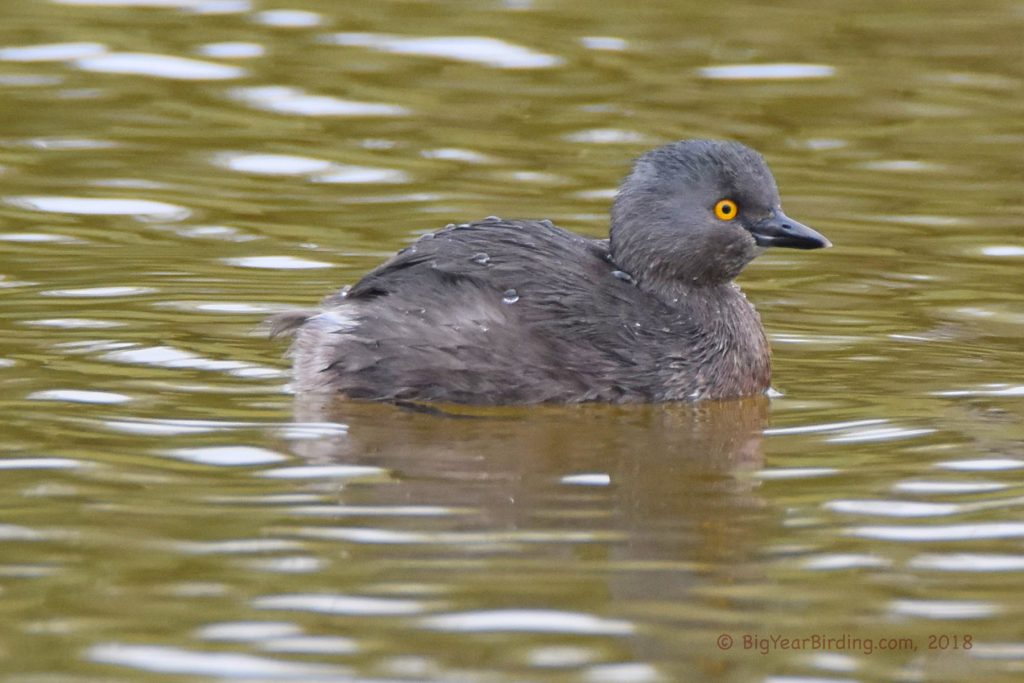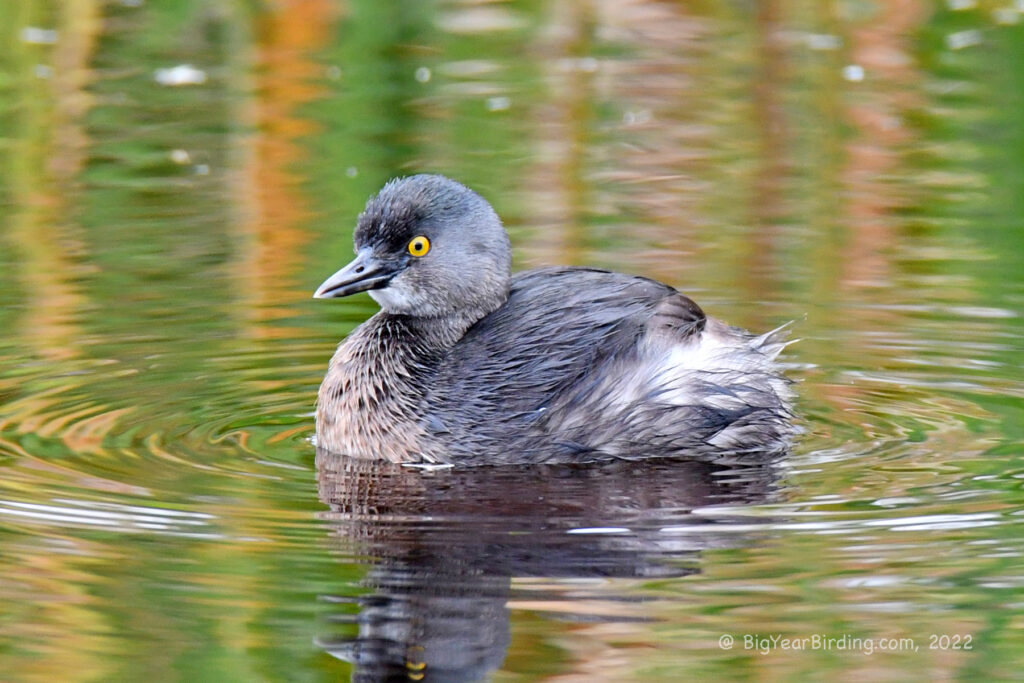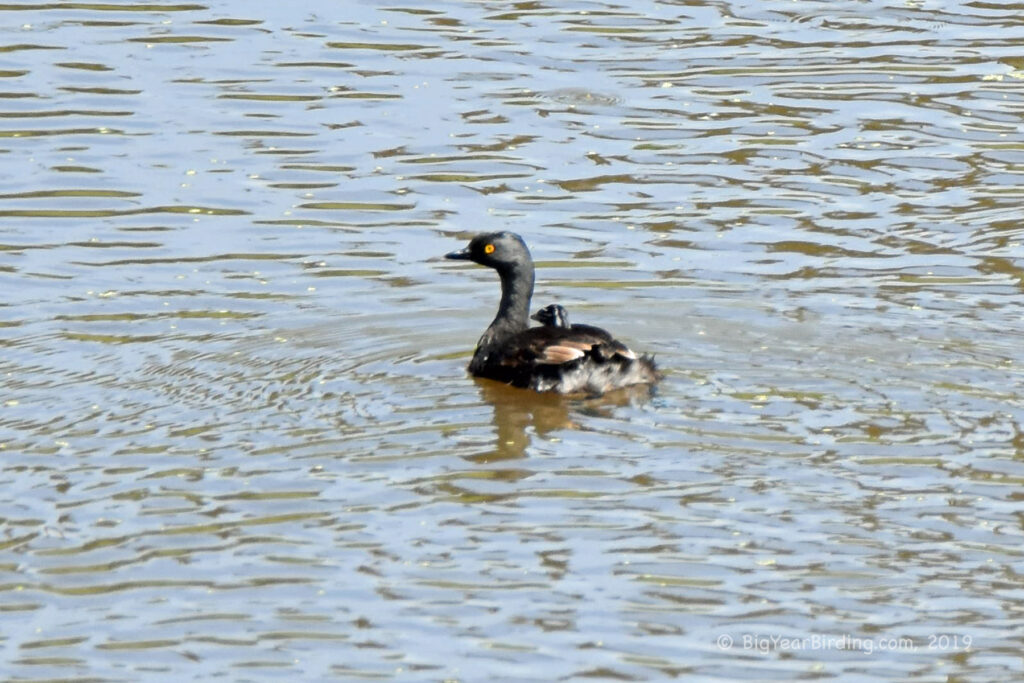
The Least Grebe (Tachybaptus dominicus) is a small freshwater bird species found in the Americas. It is the smallest grebe in the world, measuring only about 8 inches in length and weighing between 2.5 to 4.2 ounces. The bird has a round, plump body with a short tail and a small, slender bill. It has a striking black head and neck, contrasting with its reddish-brown body, and distinctive bright red eyes.

One of the distinguishing field marks of the Least Grebe is its habit of diving underwater to forage for food. It is an excellent swimmer and diver, with its short wings and dense, waterproof feathers allowing it to move quickly and effortlessly through the water. It feeds on small aquatic animals such as insects, crustaceans, and small fish.
The Least Grebe is a non-migratory bird, which means that it does not undertake seasonal movements over long distances. It prefers to stay in its home range, which includes freshwater habitats such as ponds, marshes, and slow-moving streams, throughout the year. It can be found in the southern United States, Central America, and parts of South America, including Brazil and Argentina.
Breeding behavior of the Least Grebe is also unique, as they form monogamous pairs and build floating nests in shallow water using plant materials. Both parents take turns incubating the eggs and raising the chicks, which are able to swim and dive within a day of hatching. The chicks are fed by regurgitation by the parents until they can forage on their own.

The Least Grebe is a fascinating bird that has adapted well to its aquatic habitat. Despite its small size, it is a skilled swimmer and diver, and its striking appearance makes it a favorite among birdwatchers. Its non-migratory behavior and unique breeding habits make it a valuable species to study and observe in the wild.

